Three weeks ago the new demo greenhouse of Syngenta was filled with plants. The 1.4 hectare greenhouse is now a place where the Syngenta tomato and pepper varieties are growing and can be shown to the customer in the same way as they would do in a normal greenhouse. "Growers are able to adopt everything they see here just as it is in their own greenhouse."
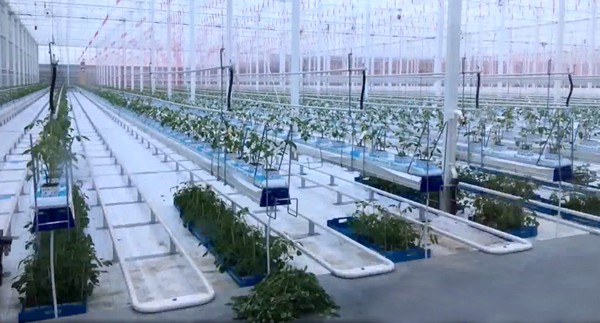
Bringing research and market together
It was over seven months ago when ground was broken for the new demo greenhouse. The demo greenhouse’s main purpose was to function as an R&D location with an important role in the development of different tomato breeds for the future. Besides that, the greenhouse is also an important meeting point where research and market can come together and where the costumers and other relations can come to see the current and future product range.
The greenhouse is 7 meters high and features many different departments for both illuminated and traditional cultivation, and there will be 1000 varieties grown. Of the 1.4 hectare, 1,500 m2 is open to the public. The new greenhouse is equipped with a sustainable energy system for warm water and electricity, and with different techniques to ensure a more energy efficient cultivation. The possibility of joining the geothermal network in the area is also being explored.
R&D location
Maik Rodenrijs with AAB explains how the major challenge in this project was primarily to arrive at quick and clear starting points within the available time. The greenhouse consultancy firm provided support in the permit phase, the design phase, the tendering phase and the construction phase of the project. "The aim was to have potential building partners to quickly start the cost calculations, with which an agreement could be concluded with each party", he says. "Finally, a speedy lead time was required. Which means a tight schedule. In mid-December 2019, the planting had to be started in the unlighted greenhouse."
One of the priorities was the practical translation from the idea into the design. Arjan Bassie, former grower, director of Hortics and nowadays responsible for the crop in the Syngenta demo greenhouse. Arjan Bassie was building the new greenhouse at his own cost and risk to subsequently manage, with Syngenta leasing the facilities from him.
He explains how he regularly coordinated with Syngenta to find the right construction partners. "Collaboration is the key to success", he said.
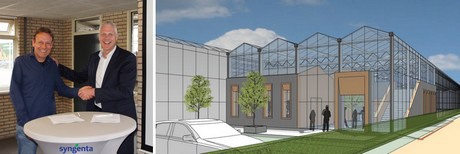
The groundbreaking ceremony of the 1.4 hectare demo greenhouse, last June in Maasland
SON-T lighting
Following comparable tests, Syngenta has opted for a conventional SON-T lighting installation, which uses Industria luminaires 1000W with a so-called 'deep reflector', 4 per girder. This amounts to approximately 190 micromol (1 light fixture per 10 m2). This was installed by Stolze, who took care of the electrical, water and grow light installation.
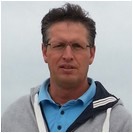 Technokas, together with AAB and Arjan Bassie, devised the integrated greenhouse, says Maurice Hartman with Technokas. "For the central heating installation we have been able to contribute a great deal of knowledge in the preliminary phase and an integral design has been made where all disciplines are aligned. During the coordination meetings, all installations were discussed openly on the basis of detailed drawings."
Technokas, together with AAB and Arjan Bassie, devised the integrated greenhouse, says Maurice Hartman with Technokas. "For the central heating installation we have been able to contribute a great deal of knowledge in the preliminary phase and an integral design has been made where all disciplines are aligned. During the coordination meetings, all installations were discussed openly on the basis of detailed drawings."
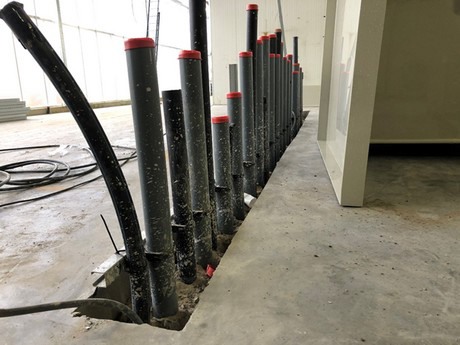
Water installation piping
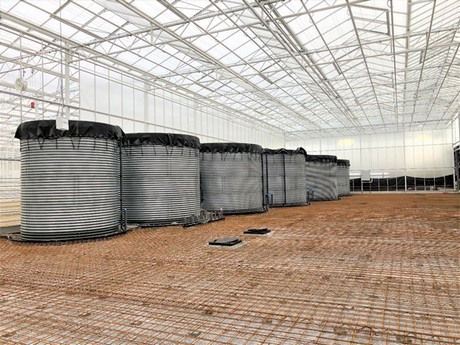
Water installation silos
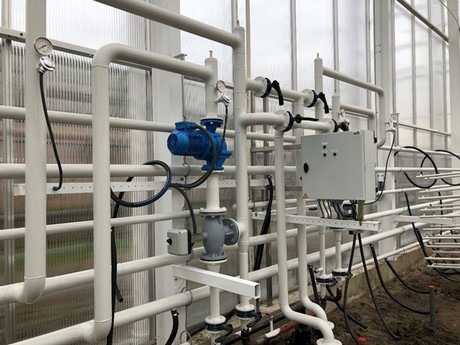
Heating mixing group - Technokas and Stolze
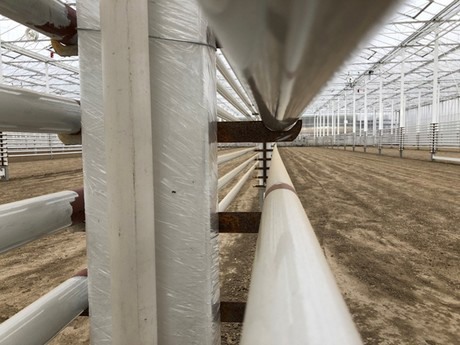
Growth and monorail tubes in the brackets

Energy saving & insect netting screens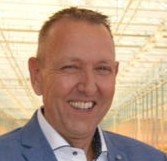 Also insect screens are a requirement in these type of greenhouses. Arjan Bassie and Syngenta have opted for insect screen type Multi-Fold by Huisman Scherming. "This screen stops as many external influences as possible. That is important. The breeding process must take place as accurately as possible to achieve a good result. And this screen is going to be part of it", says Dave Boer with Huisman Scherming.
Also insect screens are a requirement in these type of greenhouses. Arjan Bassie and Syngenta have opted for insect screen type Multi-Fold by Huisman Scherming. "This screen stops as many external influences as possible. That is important. The breeding process must take place as accurately as possible to achieve a good result. And this screen is going to be part of it", says Dave Boer with Huisman Scherming.
A clear Luxous 1147 FR energy screen is installed in sections 1-2, 3, 4, 7 and the corridor. This screen has been chosen for energy saving. And due to the high light transmittance, this cloth can also be used during the daytime on cold days.
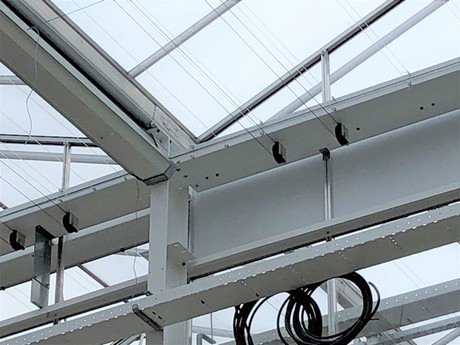
Connection of the screen purlin
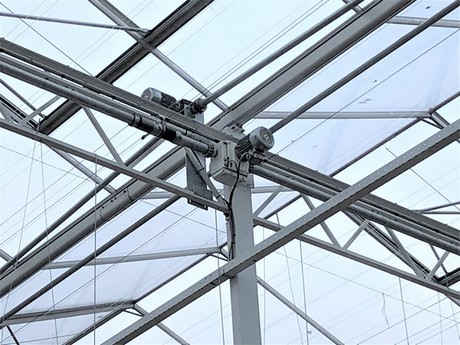
Screen and ventilation motor
Sections 5 and 6 are the illuminated sections. A light-reduction cloth type Obscura 9950 FR W is mounted there, which is mandatory against light emission. This cloth also provides a 50% energy saving.
A Harmony 5220 O FR cloth is installed in the demo room. The greenhouse roof is fitted with double glazing. The preference here is for an open structure diffuse sun screen cloth. This will be used during too much direct radiation and on hot days. The screen can then be closed completely and still allow ventilation.
Check out the Syngenta 2020 tomato catalogue here.
For more information:
Syngenta
www.syngenta.nl
Stolze  info@stolze.nl
info@stolze.nl
www.stolze.nl
Carel van Ruijven
carel@stolze.nl
+31 (0)6 29 58 59 18
Huisman Scherming 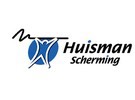
www.huismanscherming.nl
Dave Boer
dave@huismanscherming.nl
+31 (0)6 54 91 74 11
Technokas BV 
info@technokas.nl
www.technokas.nl
Maurice Hartman
mlphartman@technokas.nl
+31 (0)6 22 74 12 09
AAB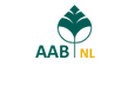
www.aabnl.nl
Maik Rodenrijs
m.rodenrijs@aabnl.nl
+31 (0)6 22 402 555
